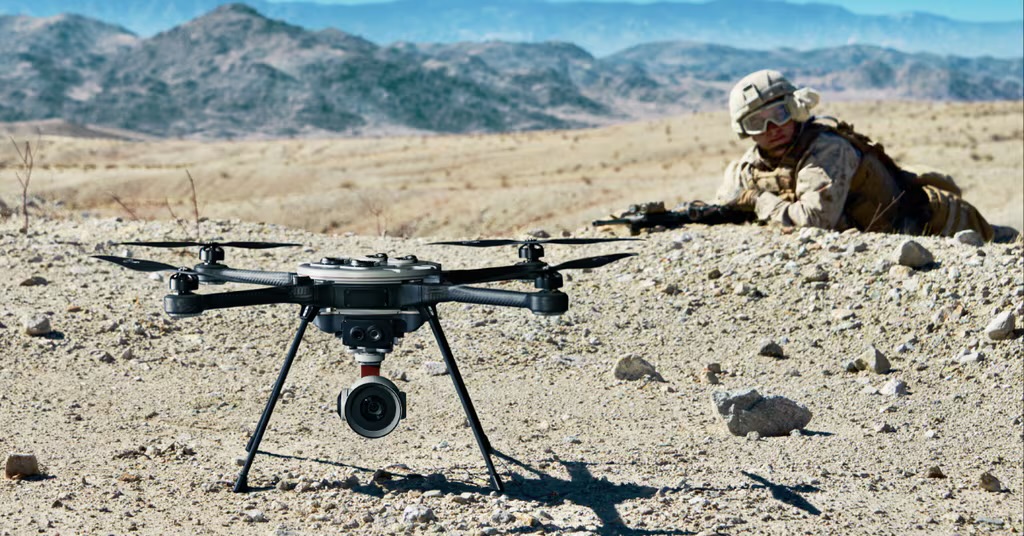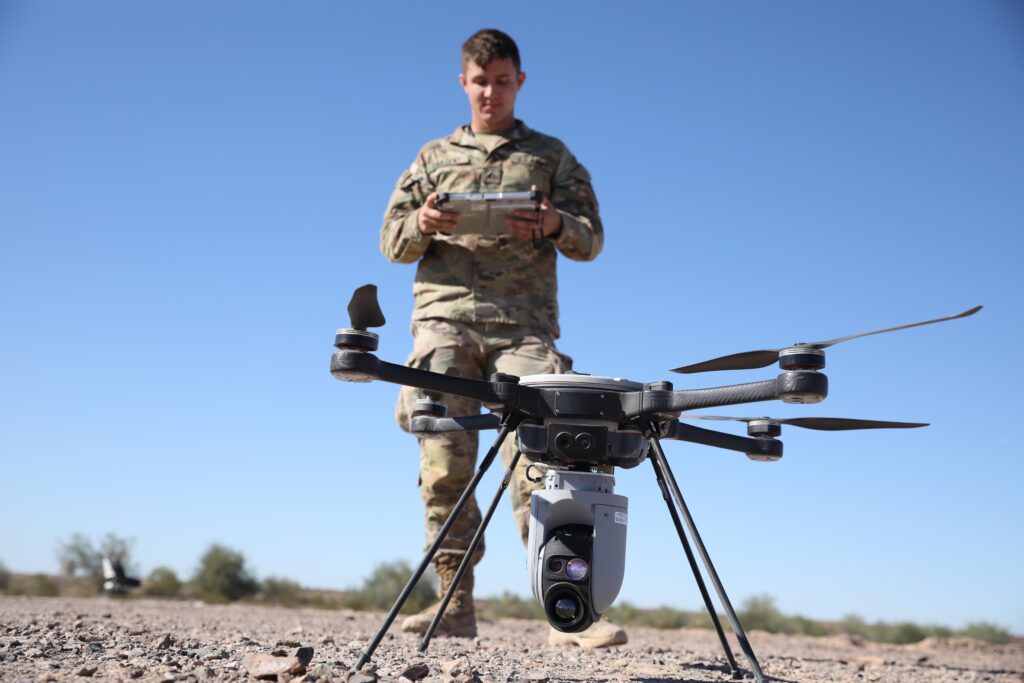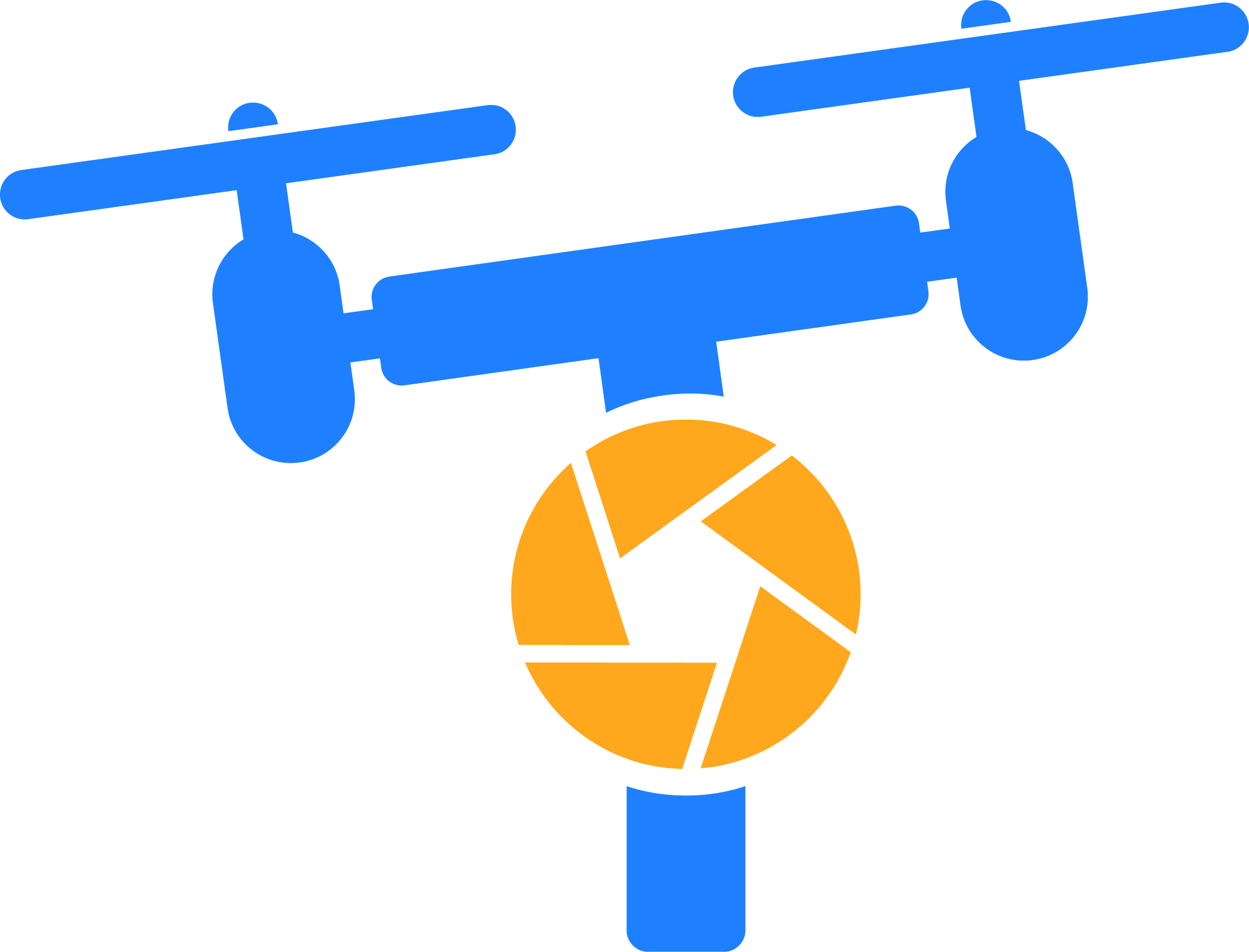Imagine a soldier, cornered and weary, surrendering not to another human but to a silent eye in the sky—a drone. That’s the essence of non-contact surrender, a groundbreaking concept reshaping modern warfare and emergency response. But how does this work in practice? Picture a drone equipped with a speaker, urging adversaries to lay down arms, or directing civilians to safe zones during crises. It’s not just science fiction; it’s a present-day tactical approach, embraced in conflict zones like Ukraine and by emergency teams worldwide. Such innovations don’t just change strategies; they define the future of military engagements and disaster preparedness, offering a glimpse into the next era of remote conflict resolution. As non-contact surrender becomes more prevalent, understanding its mechanics and implications is essential for grasping its transformative role in today’s military tactics and emergency responses.
What is Non-Contact Surrender?
When you think of surrender, you might picture soldiers raising a white flag or laying down their arms. But what if there’s a way to surrender without any physical contact? That’s exactly what non-contact surrender is all about. In the real world, this concept is transforming military operations and emergency situations, offering a novel approach to ending confrontations safely and efficiently.

Definition of Non-Contact Surrender
Non-contact surrender utilizes modern technology, to allow an individual or group to surrender without being physically present in front of their adversary. This is a leap forward from traditional methods where physical presence and interaction were critical. Non-contact surrender is largely facilitated by remote-controlled systems, such as drones, that can communicate and manage the surrender process. This method not only reduces the risk of harm but also speeds up the surrender process by bypassing traditional negotiation protocols. The innovative nature of this concept provides a humane approach to warfare and conflict resolution, leaving physical confrontation in the past. For more details on how this concept is being applied, you can check out Ukraine’s use of drones for non-contact surrender.
Mechanism of Action
The mechanism of non-contact surrender is fascinatingly straightforward yet profoundly impactful. At the core of it are drones or other remote technologies that facilitate communication between parties. Imagine directing a play with a remote control:
- Drone Deployment: Drones equipped with loudspeakers and cameras approach the surrendering party.
- Communication Initiation: The drone communicates instructions for surrender, such as moving to a safe location or assuming a non-threatening posture.
- Verification: Visual and audio equipment help verify compliance.
- Completion of Surrender: Once the process is confirmed, forces can safely approach to finalize the surrender.
This technological intervention is advantageous in many ways – it keeps both parties safer and allows for precise coordination. The use of drones transforms the surrender scenario into something from a sci-fi movie, where technology bridges the gap between adversaries. For those interested in the technological side, this article on how drones revolutionize non-contact surrender in warfare provides detailed insights.
By utilizing this method, armies and emergency services alike can facilitate surrender in a controlled and less dangerous environment, illustrating a significant shift in strategy and approach.
How Non-Contact Surrender Works with Drones
The concept of non-contact surrender is a relatively new strategy where combatants or individuals in crisis situations submit without direct human contact. Drones play a pivotal role in facilitating this method. As they hover silently above, they communicate surrender protocols, offering a safe channel for those on the ground. This innovative approach is transforming both military engagements and emergency responses, providing new avenues for safety and resolution.
Role of Drones in Non-Contact Surrender
Drones possess several capabilities that make them ideal for non-contact surrender scenarios. These unmanned aerial vehicles (UAVs) are equipped with:
- Advanced Communication Systems: Modern drones come with high-quality speakers and microphones. These features allow them to deliver clear messages and receive responses, as seen in Ukraine’s approach to encouraging non-contact surrender.
- Real-time Surveillance and Monitoring: Drones can provide a bird’s-eye view of the situation. This capability enables them to assess and relay on-the-ground conditions to command centers, which is crucial in both military and emergency situations.
- Precision Navigation: With GPS and other navigation technologies, drones can accurately hover or travel to specific locations. This precision ensures that communication can take place in the right area without risking personnel.
Operational Protocols
When it comes to using drones for non-contact surrender, military and emergency teams follow meticulous protocols to ensure efficiency and safety. Here’s how it typically works:
- Assessment and Planning: Before deployment, teams analyze the situation. Understanding the terrain and the nature of the conflict or disaster is crucial.
- Deployment: Drones are strategically launched from a safe distance. Their flight path is planned to maximize both communication capability and safety.
- Communication: Once in place, drones broadcast surrender or safety instructions. They can adapt their messages based on real-time feedback from surveillance data.
- Monitoring and Adaptation: As the situation unfolds, drones continuously send images and data back to operators. This feedback loop allows for rapid adjustments in strategy.
- Follow-Up: After achieving surrender or resolution, drones may assist in coordinating additional support or monitoring the situation for ongoing developments.
Drones are becoming an indispensable tool in modern military and emergency operations, transforming how we approach safety and surrender. With their advanced capabilities, these flying robots might just be the silent negotiators we’ve been waiting for.

(U.S. Army photo by Sgt. Marita Schwab)
Applications of Non-Contact Surrender
In a world where technology often sets the pace, the concept of non-contact surrender is pushing boundaries in ways we might not have imagined just a few years ago. By using technology like drones, it enables safe and efficient surrender without direct human interaction. This innovation finds its roots not only in military operations but also extends to emergency situations where human lives are at stake. Let’s explore the diverse applications of non-contact surrender through several real-world examples.
Military Applications
Non-contact surrender has become a groundbreaking element in modern military operations. By using drones to facilitate surrender, forces can ensure the safety of both the surrendering and receiving parties. In Ukraine, for instance, the use of drones has enabled surrender from a distance, minimizing risk and maintaining order in chaotic wartime environments. This Forbes article highlights how Ukraine encourages non-contact surrender, promoting safety and compliance with international laws. This method also aids in gathering valuable intelligence while ensuring ethical treatment under the laws of armed conflict.
Emergency Situations
Emergency responders also find non-contact surrender highly effective, particularly in crisis scenarios where direct contact might be dangerous. Imagine a situation where hazardous materials are involved, and a vital surrender of control or authority is necessary. By using similar technology, emergency teams can communicate with trapped individuals or groups, guiding them to safety without putting anyone at additional risk. In scenarios involving natural disasters or chemical spills, remote communication systems can direct evacuations and surrenders, ensuring responsive and measured actions during intense emergencies.
Police utilizing this technology in fugitive search and apprehension. Once the fugitive is located, a drone issues commands for surrender. The psychological impact of a drone hovering over your exact location is a powerful motivator for surrender.
Case Studies from the Ukraine-Russia War
In the ongoing conflict between Ukraine and Russia, non-contact surrender has been spotlighted as a crucial element of humanitarian efforts. The “I Want to Live” project epitomizes this approach by offering Russian soldiers a way to contact Ukrainian forces securely and safely via phone or messaging apps. This initiative ensures the protection of human lives while adhering to the laws of armed conflict. Case studies from this war reveal successful outcomes, where the use of technology reduced casualties and facilitated surrenders that might otherwise have escalated into violent confrontations. The Ukraine Symposium provides in-depth insight into these practices and their legal and ethical implications.
The applications of non-contact surrender are transforming warfare and emergency response by utilizing technology as a bridge between intent and action, ensuring safety, compliance, and humanity in situations that often lack all three.
Advantages of Non-Contact Surrender
In the age of technology, non-contact surrender is an innovative method gaining traction in various fields, including military and emergency operations. Unlike traditional surrender methods, which may involve physical handovers, non-contact surrender leverages technology, such as drones, to safely and efficiently handle surrender situations. Let’s explore some significant advantages of this approach.
Safety for Personnel
Non-contact surrender plays a vital role in safeguarding both soldiers and civilians. By reducing direct physical contact, this method minimizes the risk of harm, injuries, or fatalities that can occur during traditional surrender procedures.
- Avoiding Direct Confrontation: Non-contact methods reduce the likelihood of misunderstandings or violent confrontations, keeping soldiers away from potentially hazardous situations.
- Protecting Civilians: By using drones and other technologies, civilians are kept at a safe distance, ensuring that non-combatants are not involved in risky engagements.
Efficiency in Operations
This method increases the operational efficiency of military and emergency teams during conflicts or emergencies. Non-contact surrender allows for quicker, more streamlined processes, which can be crucial in time-sensitive scenarios.
- Time-Saving: Traditional surrender methods can be lengthy and complicated. Non-contact surrender expedites the process, allowing personnel to focus on more critical missions.
- Resource Management: With enhanced coordination and communication, resources can be allocated more effectively, ensuring that efforts are concentrated where needed the most.
Technological Advancement
The role of technology is pivotal in enhancing non-contact surrender. Drones, remote communication devices, and other tech tools are constantly evolving, providing sophisticated solutions to complex problems.
- Drones and Surveillance: These devices not only improve communication but also gather vital intelligence, ensuring accurate and informed decision-making.
- Advanced Communication Tools: Innovative communication technologies ensure seamless interaction between parties, leading to smoother negotiations and resolutions.
By embracing such advanced strategies, non-contact surrender not only modernizes how we handle surrender situations but also stands as a testament to how technology can reshape traditional practices, ensuring peace and safety for all involved.
T.A.P. Summary
Texas Aerial Photographers enjoys highlighting how drones save lives. Non-contact surrender, driven by drone technology, presents a transformative shift in both military and emergency response operations. By allowing for real-time communication from a distance, drones offer a safer environment for both parties involved. This approach has been showcased in conflict zones like Ukraine, where drones are actively used to manage surrender situations.
In the future, non-contact surrender may bridge gaps in crisis negotiations, offering new possibilities for more humane warfare strategies and enhanced emergency response protocols.
Readers are encouraged to explore how this technology can be further refined to improve global peacekeeping efforts. Are we ready to embrace these technological advancements and the ethical questions they pose in modern warfare? Let me know what you think!
